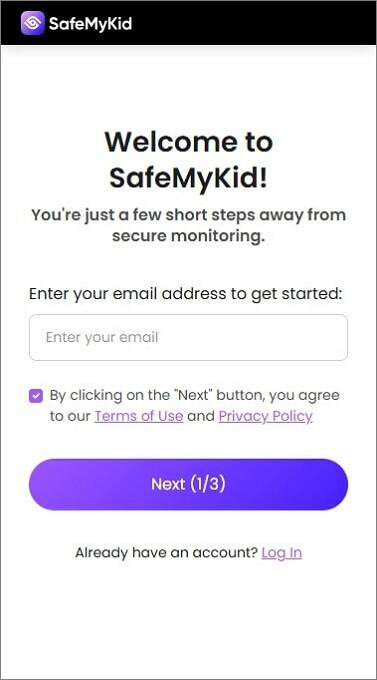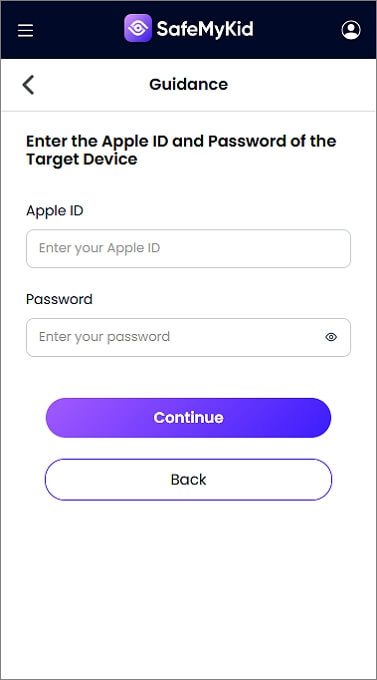Trace The Mobile Number's Exact Location on The Map Easily with these 6 Methods

Tracking a mobile number’s exact location on a map has become more accessible with advancements in GPS, mobile networks, and tracking applications. Various methods can help you pinpoint a device's location in real time.
In this article, we’ll explore six reliable methods to trace a mobile number's exact location on the map, highlighting both official tracking solutions and third-party tools.
![]()
How Mobile Number Location Tracking Works
Mobile tracking relies on various technologies, including GPS, Wi-Fi networks, and cell tower triangulation. When a device connects to the internet or a network, its approximate location can be determined. Types of mobile tracking methods are shown below:
- GPS Tracking: Uses satellite data for pinpoint accuracy.
- Network-Based Tracking: Uses cellular towers to estimate the location.
- Wi-Fi-Based Tracking: Determines the location based on nearby Wi-Fi networks.
Each method has its advantages and limitations, which we will explore further in this article.
1. Using Google Maps to Track a Mobile Number
Google Maps provides a convenient way to share real-time location details with trusted contacts through its Location Sharing feature. This tool allows users to send their live GPS location to friends or family members for a set duration or indefinitely.
However, it comes with a significant limitation—it requires the explicit consent of the person being tracked. Without their approval, tracking their location using Google Maps is impossible. This makes it useful for personal safety and coordination but unsuitable for discreet tracking.
Steps to Track a Number Using Google Maps
- Open Google Maps on the target device.
- Tap on the profile picture and select Location Sharing.
- Choose a contact and set the duration for sharing.
![]()
![]()
Pros and Cons:
- Free and easy to use.
- Provides real-time updates.
- Requires user consent, making it ineffective for tracking unknown numbers.
2. SafeMyKid: The Best Mobile Number Tracking Solution
When it comes to accurately tracing a mobile number's exact location, SafeMyKid stands out as the most reliable and effective solution. Unlike Google Maps, which requires location-sharing consent, or mobile carrier tracking, which has limitations, SafeMyKid provides real-time tracking without unnecessary hurdles.
SafeMyKid is specifically designed for parental control, family tracking, and personal safety. It offers precise GPS location updates and geofencing alerts, making it an excellent choice for parents, employers, or anyone who needs a secure tracking method.

Main Features of SafeMyKid
When it comes to tracking a mobile number’s exact location on a map, having a reliable tool is essential. SafeMyKid stands out with its advanced tracking capabilities, ensuring accurate and real-time location monitoring. Below are the main features that make SafeMyKid a top choice for precise mobile tracking:
- Real-Time Location Tracking – SafeMyKid provides accurate, live GPS updates so you can monitor a mobile number’s movement instantly.
- Works on Both Android & iPhone – The app is available for Android (via direct installation) and iPhone (through iCloud integration), eliminating the need for extra apps on Apple devices.
- No Permission Hassles – Unlike Google Maps, SafeMyKid allows continuous tracking without requiring ongoing consent from the target device.
- Geofencing Alerts – Set up safe zones for your loved ones and receive instant alerts when they enter or leave a designated area.
- Location History Tracking – Review a phone's past movements to see where it has been over a specific period.
How to Set Up SafeMyKid to Trace Mobile Number Exact Location on Map
SafeMyKid offers an easy-to-use solution with precise location tracking. Follow these steps to set up SafeMyKid and start monitoring in no time:
How to Trace Mobile Number Exact Location on Map on Android
Step 1. Register and set up your account using your email address.

Step 2. Easily install the SafeMyKid app on the target Android device online.

Step 3. You can now trace the mobile number's exact location on a map and access real-time updates through SafeMyKid’s online dashboard.

How to Trace Mobile Number Exact Location on Map on iPhone
Step 1. Access the SafeMyKid website from any device.

Step 2. No need to install any app! Just use iCloud credentials to connect the target iPhone.

Step 3. Begin to access mobile number exaction location details on the map via the SafeMyKid dashboard.

Why SafeMyKid is Highly Recommended
SafeMyKid stands out as a top-tier solution for tracking a mobile number’s exact location on a map due to its precision, ease of use, and advanced security features. Here are five key reasons why SafeMyKid is highly recommended:
- Real-Time Location Tracking – SafeMyKid provides live location updates, allowing you to track the exact whereabouts of a mobile device in real time.
- Historical Location Data – View past location history to monitor movement patterns and ensure consistent tracking.
- Stealth Mode Tracking – Operates discreetly in the background, ensuring the user being tracked remains unaware, which is useful for security purposes.
- Cross-Device Compatibility – Works seamlessly across multiple devices, including iPhones, Android smartphones, and tablets, providing a comprehensive tracking solution.
With SafeMyKid, you get a powerful, user-friendly tracking tool designed to enhance safety, security, and peace of mind effortlessly.
3. Tracking Mobile Numbers via Network Provider Services
Many mobile carriers provide built-in location tracking services that allow users to locate lost devices, track family members, or monitor multiple lines on the same account. These services use a combination of GPS, cell towers, and Wi-Fi signals to provide an approximate location of the device.
However, they come with certain limitations—most carriers require the account holder’s explicit consent before enabling tracking, and some may charge additional fees for advanced features. While carrier-based tracking is reliable and secure, it may not offer real-time updates or detailed movement history.
Steps to Use Network Provider Tracking
- Contact your mobile carrier and request location tracking.
- Enroll in a family location tracking service (e.g., AT&T FamilyMap, Vodafone Family).
- Access the phone’s location through the carrier’s app or website.
![]()
Advantages of Using Network Provider Tracking:
- Works without installing third-party apps.
- Reliable and accurate for family tracking.
Disadvantages of Using Network Provider Tracking:
- Requires account holder consent.
- Some services may charge a fee.
4. Using Online Mobile Number Tracker Websites
Several websites claim to offer mobile number tracking services, promising to pinpoint a phone’s exact location instantly. However, most of these platforms are unreliable, inaccurate, or outright scams designed to collect personal data or push paid subscriptions without delivering real results.
These services typically rely on public databases, IP addresses, and mobile network signals to provide an estimated location, which is often outdated or highly imprecise. Unlike legitimate tracking solutions like Google’s Find My Device or SafeMyKid, these online tools lack real-time GPS tracking and should be approached with caution to avoid privacy risks and misinformation.
![]()
Limitations of Online Trackers
- Often inaccurate and unreliable.
- May pose privacy risks by collecting user data.
- Some require payment for full results.
While these tools can sometimes provide rough location estimates, they are not as effective as SafeMyKid or telecom provider services.
5. Tracking Mobile Numbers via IMEI and GPS Tracking
Every mobile phone is assigned a unique International Mobile Equipment Identity (IMEI) number, which serves as a digital fingerprint for the device. When a phone is lost or stolen, this IMEI number can be used by law enforcement agencies and network providers to track or blacklist the device, preventing it from being used on mobile networks.
However, IMEI tracking is not accessible to the general public and typically requires police reports and carrier assistance.
Steps to Track a Phone Using IMEI
- Find the phone’s IMEI by dialing *#06#.
- Report the IMEI to the police or network provider.
- Use a government-authorized tracking system if available.
![]()
Pros of IMEI Tracking:
- Can help retrieve lost or stolen phones.
Cons of IMEI Tracking:
- Requires law enforcement involvement.
- Cannot track in real-time without police assistance.
6. Using Find My Device (Android) and Find My iPhone (Apple)
Both Google and Apple provide free built-in tracking services to help users locate lost or stolen devices quickly. Google’s Find My Device and Apple’s Find My iPhone use GPS, Wi-Fi signals, and mobile networks to display a device’s location on a map.
These services also offer features like remote locking, sound alerts, and data erasure to protect sensitive information. However, they require the device to be connected to the internet and signed into a Google or Apple account. While effective for personal use, they lack real-time tracking and geofencing, making third-party solutions a better choice for continuous monitoring.
Steps to Track on Android
- Visit Find My Device.
- Log in with the linked Google account.
- View the device’s live location on the map.
![]()
Steps to Track on iPhone
- Open Find My iPhone in iCloud.
- Select the target device.
- View the real-time location.
![]()
Ethical and Legal Issues of Tracing Mobile Numbers Exact Location on Map
Tracking someone’s phone without consent is illegal in many countries. Users should ensure they have permission before using tracking methods.
When Tracking is Legal:
- Tracking a child’s phone with parental consent.
- Locating a lost or stolen device.
- Using authorized services like SafeMyKid
FAQs – Trace The Mobile Number's Exact Location on The Map
Curious about how to trace a mobile number's exact location on the map? Below are some frequently asked questions to help you understand the process, available tools, and legal considerations.
1. Can I trace a mobile number’s exact location for free?
Yes, but with limitations. Free methods like Google Maps require the person to share their location with you, while carrier tracking may have restrictions. If you need a reliable, real-time solution, third-party apps like SafeMyKid provide accurate tracking without requiring ongoing permissions.
2. How does SafeMyKid track a mobile number’s exact location?
SafeMyKid uses a combination of GPS, Wi-Fi, and mobile network signals to pinpoint a device’s location in real time. It provides live tracking, geofencing alerts, and movement history to ensure complete location monitoring.
3. Do I need to install SafeMyKid on the target phone?
- For Android devices: Yes, SafeMyKid must be installed on the phone you want to track.
- For iPhones: No, SafeMyKid works via iCloud integration, so no installation is required.
4. Can I track someone’s phone without them knowing?
Yes, SafeMyKid operates in stealth mode on Android devices, meaning it runs in the background without notifying the user. However, tracking someone without their consent may be subject to local privacy laws, so always ensure compliance.
5. Is SafeMyKid better than Google Maps for location tracking?
Yes. While Google Maps requires the person to manually share their location, SafeMyKid provides continuous tracking without requiring repeated permission. It also includes geofencing alerts, location history, and real-time updates, making it a more powerful solution.
Conclusion
Tracking a mobile number’s exact location on a map is now easier with multiple available methods. Whether you use Google Maps, network provider services, or specialized tracking apps, the right tool depends on your needs.
SafeMyKid stands out as the best option for those who need real-time tracking and parental monitoring. If you need to trace a mobile number's exact location on a map, always ensure you follow legal guidelines to respect privacy and use tracking tools responsibly.

